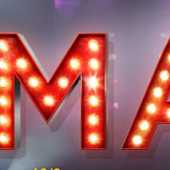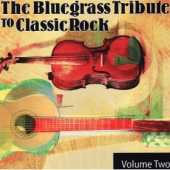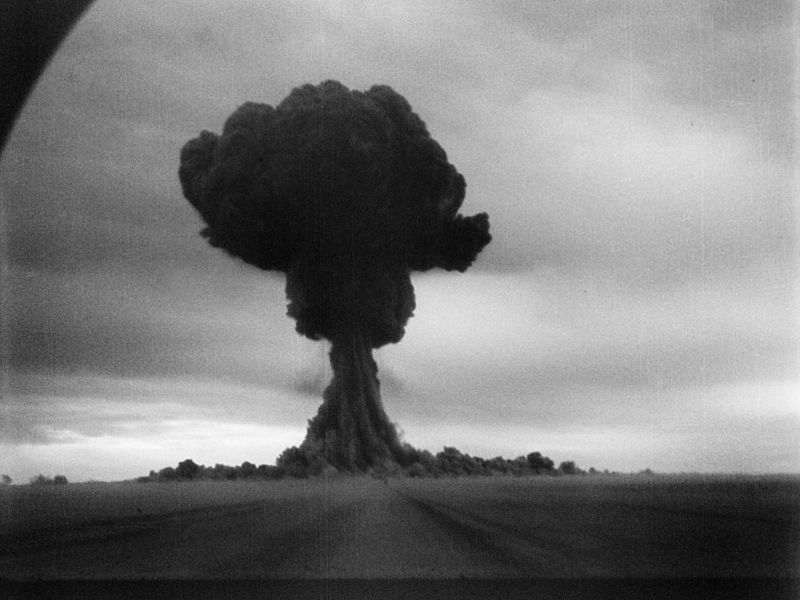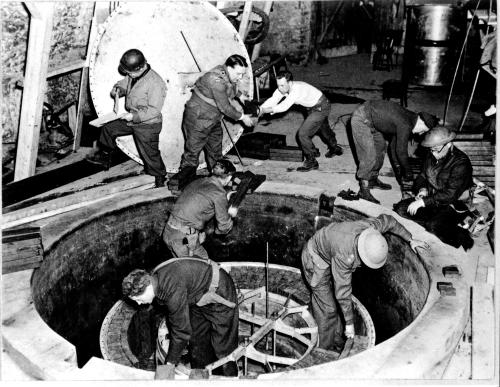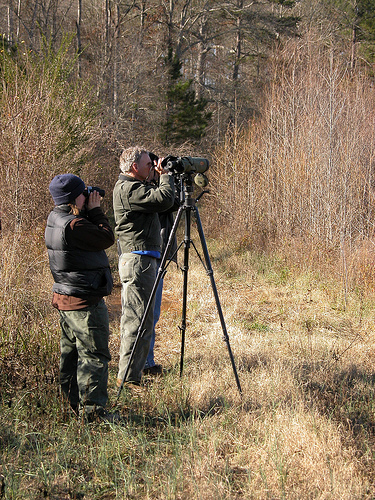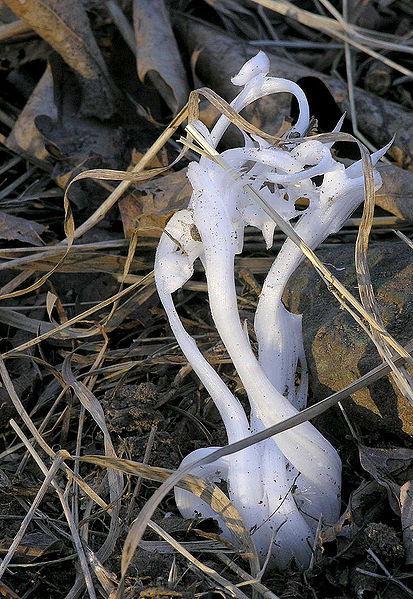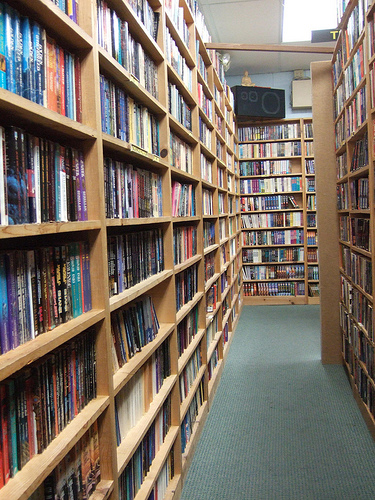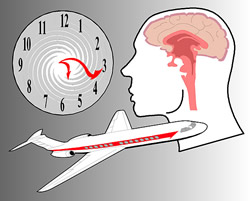Nuclear Weapons 16 - The Hydrogen Bomb
In 1942, during the U.S. Manhattan Project to develop an atomic bomb, physicist Edward Teller promoted the idea of using an atomic blast to trigger a thermonuclear reaction that would result in a much bigger explosion. The Project team decided to focus on atomic bombs and not to explore his idea during the war. After the war, there was resistance from some scientists about technical difficulties with Teller’s ideas and other people were reluctant to create such a devastating super bomb that could only be used against large populations of civilians. Teller and his supporters said that it was inevitable that such bombs would be created and the U.S. would be at a strategic disadvantage if we did not have them.
In 1949, when the Soviet Union exploded its first atomic bomb much earlier of the U.S. expected, U.S. President Harry Truman made the decision to proceed with research on the creation of such a thermonuclear or hydrogen fusion bomb. The exact way to trigger such a fusion reaction had not yet been determined when the project began.
In 1951, a feasibility test for a fusion bomb was conducted in the new U.S. Pacific Proving Ground in the Marshal Islands. A fission bomb in the shape of a donut was exploded with a small amount of liquid heavy hydrogen (deuterium and tritium) in the middle of the donut. The hydrogen fused and created a burst of fast neutrons which caused the U-238 in the bomb to undergo fission. The fusion reaction generated little energy but did prove the principle.
In 1952, a full test of a fusion bomb was conducted at the Pacific Proving Ground. The device was not a deployable bomb. It was a twenty feet tall and weighed over sixty four tons. The explosive yield was equivalent to ten million tons of TNT. The island of Elugelab was destroyed in the blast leaving a crater over a mile wide in the ocean floor. In 1952, less than a year later, the Soviet Union exploded a thermonuclear bomb. It was a relatively small device but it was a deliverable bomb and a powerful propaganda tool.
By 1954, the U.S. had managed to create an actual thermonuclear bomb that could be a deliverable weapon. When it was tested at the Bikini Atoll in the Marshall Islands, the fifteen megaton yield was three times bigger than expected. Poor weather conditions caused a cloud of radioactive fallout to spread over inhabited areas of the Marshall Islands. The affected areas were evacuated and are still uninhabitable. The exposed natives sustained high levels of cancer and birth defects over the following years.
Hydrogen bombs had been advertised as being cleaner than fission bombs because the fusion reaction did not produce the radioactive materials that were produced by a fission bomb. However, the publicity was misleading because a powerful fission reaction was used to trigger the fusion in a hydrogen bomb and that fission reaction did produce large amounts of radioactive fallout. Hydrogen bombs were so powerful that, in addition to the destruction of civilian areas around military targets, huge clouds of fallout could threaten cities and even other countries that were miles away from the blast. Concerns for the welfare of the whole world began to be expressed if the superpowers with thermonuclear bombs went to war with the new weapons.
First United States Thermonuclear Device Test:
Nuclear Weapons 15 - The Soviet Bomb
Soviet scientists contributed much to the development of nuclear physics during the first decades of the Twentieth Century. When nuclear fission was discovered in the late 1930s, Soviet scientists understood that theoretically, enormous amounts of energy could be released from the fission of uranium. Work on fission research in the Soviet Union began in 1940. Stalin started a nuclear weapons program after getting a letter from a Russia physicist working on fission warning him that the U.S and its allies were working on nuclear weapons but he did not assign many resources because of the demands of the war with Germany.
Although the Soviet Union was our ally in the fight against the Axis powers in World War II, the U. S. government did not trust Stalin. The British were informed about our Manhattan Project to develop nuclear weapons during the war but we did not inform the Soviet Union. Our mistrust of the Soviet Union was justified in as much as they had penetrated our Manhattan Project with spies. Stalin was aware of our work on an atomic bomb and was not particularly surprised or interested when Truman mentioned a powerful new weapon at the Potsdam Conference in late July of 1945. The Soviet spies were not actually trained agents but were rather private citizens who, for their own reasons, leaked information on our nuclear weapons research to the Soviets.
After the bombing of Hiroshima and Nagasaki and the end of World War II in the Pacific, the United States released a report on the Manhattan project. There was an intense international debate over nuclear weapons with the United States working to keep a monopoly. The Soviet Union lobbied for general bans on the use of nuclear weapons but were busy working on the creation of their own nuclear weapons. They used the Manhattan Project report as a guide to developing the industrial facilities necessary to an atomic bomb project. Enormous resources were expended and whole secret cities were created.
The scientific director of the Soviet program was nuclear physicist Igor Kurchatov. The administrative head of the Soviet effort was Lavrenty Beria, previous head of the Soviet public and secret police. Paranoid by nature, he did not trust his scientists or the information sent from the U.S. nuclear program. He assigned seams of scientists to work in different laboratories on duplicate projects. Their findings were compared and cross checked against the intelligence gained from the spies in the United States. The information from the United States nuclear research allowed the Soviet Union to advance more quickly than the U.S. had in the development of an atomic bomb. in August of 1949, the Soviet Union detonated a Fat Man style implosion plutonium bomb in Kazakhstan. The explosion of a Soviet bomb came much earlier than the U.S. expected.
With the United States monopoly on nuclear weapons ended, the Cold War nuclear arms race had begun.
The first Soviet atomic bomb test:
Nuclear Weapons 14 - After the War
In 1945, The United States was pouring resources into the Manhattan Project to create an atomic bomb. Part of the reason that the Manhattan Project was started in the first place was the knowledge that Germany was working on their own atomic bomb project. Werner Heisenberg was heading a team to develop a nuclear weapon for Germany but the German government failed to invest enough resources for the project to make much progress. In March of 1945, Kurt Diebner was assigned the task of making a prototype German atomic bomb in Ohrdruf, Thuringia. Research was carried out at an experimental nuclear reactor at Haigerloch.
Following Germany’s surrender in May of 1945, Project Alsos was initiated by the United States. A team of scientists followed the Allied troops into Germany to investigate the German nuclear weapons program and prevent the Russian army coming in from the east from collecting any information, equipment or personnel that might help them create their own nuclear weapons program. Project Alsos reported that although the Germans did have a nuclear weapons program, they were not even close to creating an atomic bomb by the time the war ended.
The horrendous damage done by the two atomic bombs dropped on Hiroshima shocked the world. The world had entered a dangerous new age of nuclear weapons of tremendous destructive power. A intense international debate raged over the question of who should control nuclear weapons. Many of the scientists who had worked on the Manhattan Project lobbied international control of such weapons. They suggested that either an international agency be formed for the purpose of controlling nuclear weapons or that the information on how to build such weapons be distributed to all the major powers. It was not surprising that the United States, the only world power which had possession of nuclear weapons, was not enthusiastic about giving away such a strategic advantage over all other nations. The deep distrust that the U.S. had for the Soviet Union following the war encouraged the U.S. to work to maintain a monopoly on nuclear weapons.
The idea of using a fission bomb to ignite a much more powerful fusion bomb had been proposed in 1942 by Edward Teller but rejected by the Manhattan project in favor of fission bombs. While Teller lobbied for the fusion bomb and worked on the design with a few others, worked continued on refining the design of fission based nuclear weapons. The U.S. scientists and engineers working on the fission bombs were concerned about the feasibility of such weapons and were also reluctant to create a bomb that was thousands of times more powerful than the bombs dropped on Japan. From a strategic perspective, it was felt that it would be more useful to have a lot of powerful nuclear bombs than to have relatively few super powerful bombs.
The situation suddenly changed when the Soviet Union detonated its first atomic bomb in August of 1945. The United States was no longer the only nation with a nuclear weapon and the nuclear arms race had begun.
German experimental reactor at Haigerloch:
Nuclear Weapons 13 - The Surrender of Japan
By 1945, the Japanese had been losing the war in the Pacific for two years. They had been driven off the Philippines and other islands that they had occupied. With the defeat of Germany in the European theater, the Russians deployed major portions of their armies to the Russian Far East. The Japanese merchant fleet which was critical for supplying war materials and fuel to the resource poor Japanese home islands had been destroyed. With their major factories destroyed by Allied bombing raids and their remaining battle fleet low on fuel, their situation was desperate. The Japanese tried to negotiate with the American government for a resolution to the war but found the American demands unacceptable. The Japanese prepared for a suicidal defense of the Japanese home islands against the coming American invasion.
In July of 1945, the United States, Britain and Russia convened in Potsdam in occupied Germany to discuss the punishment of Germany and other post war issues. During the conference, Truman was notified about the successful Trinity test of a plutonium bomb during the conference. He hinted to the Russians that the United States had a powerful new weapon but provided no details. Unknown to Truman, the Russians had penetrated the security surrounding the Manhattan project but Stalin was not impressed with what he had been told about nuclear weapons.
On July 26, 1945 the United States, Britain and China issued the Potsdam Declaration demanding the unconditional surrender of Japan to end World War II. The Declaration called for the removal of the Japanese government and military command, the occupation of Japan, lost of all territories conquered by Japan, total disarmament and prosecution of war criminal. The Japanese Supreme Council for the Direction of the War and the Emperor refused the demand and issued their own terms for surrender including allowing the existing Japanese government to remain in control of the Japanese homeland, carry out the disarmament, and prosecute the war criminals. They were also seeking confirmation of Russia’s neutrality according to a treaty they had signed.
On August 9, 1945, the United States became the first nation on earth to use an atomic bomb on an enemy by dropping a uranium gun-type bomb called Little Boy on Hiroshima, Japan. The Russians declared war on Japan on August 8, 1945, and invaded the Japanese puppet state of Manchukuo on the Asian mainland. A plutonium bomb named Fat Man was dropped on Nagasaki, Japan on August 9, 1945. The devastation caused by the nuclear two bombs was terrible with casualties in the tens of thousands.
In light of these new developments in the Pacific War, the Emperor convened the Supreme Council for the Direction of the War. A captured U.S. B-29 pilot had lied to his interrogators and told them that the U.S. had one hundred atomic bombs and would start dropping them on Tokyo and Kyoto in the next few days. The Emperor told the members of his war council that they should accept the Allies terms for unconditional surrender. On August 12, the Japanese sent a telegram to the U.S. government accepting all of the Potsdam Declaration except for demanding that the Emperor retain his power and status. The Allies responded that their occupational force would be the ultimate authority in Japan after the war. The Japanese argued about how to respond and the Allies waited until August 14 and then staged the biggest bombing raid of the war with hundreds of B-29 bombers raining destruction down on Japan. In the meantime, a group within the Japanese military attempted to stage a coup to seize control of the government to prevent surrender. On August 15, a recorded speech from the Emperor was broadcast to the Japanese people telling them that Japan was surrendering.
Japanese foreign minister signs the Japanese Instrument of Surrender for World War II:
Winter composting
I'll be honest with you, when winter rolls around, I just keep chucking everything into my compost bin as usual. I'm lucky to live in a relatively mild climate where temperatures rarely get below freezing. It rains all winter, so my big challenge is keeping the lid on the big plastic composter I bought this year, to prevent the compost from getting soaked in all the winter rain. Beyond that, it's pretty much business as usual.
Help birds: Join the Christmas Bird Count
For over a hundred years, the Audubon Society has conducted an annual Christmas Bird Count (CBC) to create a snapshot of bird numbers and distribution throughout America. The "Christmas" in Christmas Bird Count is something of a misnomer; the count takes place between December 14 and January 5, based on the scheduling of each area's locations.
Frost flowers: The most beautiful natural phenomena?
I had never heard of frost flowers until a few days ago, when someone sent me a link to this page explaining all about them. How can I have not known about something so amazingly beautiful?
2012: My year in reading
In 2012 I worked harder than possibly any other year of my life, and my sad reading statistics reflect it. I track the books I have read in Goodreads, and sorting my list by date makes it painfully obvious how poorly I did in 2012 (relatively speaking).
Reading Pile: 12/22/12
Iron: Or After The War HC- I was really looking forward to cracking into this after seeing the beautiful cover design and quality of the format. Unfortunately, after about twenty pages into the story I was starting to get sleepy because the storytelling isn’t that engaging. Vidaurri’s artwork can be exceptionally beautiful in its bleak simplicity, and slightly reminiscent of Scott Hampton or Jon J Muth. However, he over utilizes a few specific page layouts again and again to the point where he quickly seems like a one rick pony. It’s a pretty layout, but it only works so often. He also utilizes are very dark and bleak palette of colors with very little details or backgrounds, so you’re pretty much just always looking at snowy landscapes and unlit bare walls. The plotting is a bog of unclear story elements and none of the characters really felt developed. Mostly, I just didn’t even care. It’s a pretty enough package at $24.99, and considering it felt like forever for me to trudge my way through the story I guess that says something about its density. One particular complaint on the design though, I friggin’ hate it when they put gold or silver on the cover to the point where it flakes off on your fingers. C+
Indestructible Hulk #2- It looks like Waid found the sweet spot again and found the right tone and motivating concept for the character. I’m not crazy about the $3.99 price tag for twenty pages of story, but it’s enjoyable and hopefully Waid can maintain the momentum. I’m also enjoying Leinil Yu’s artwork more on this title than I have on anything else in the past five years plus, so hooray for that. B+
Black Beetle #0- If you already pick up Dark Horse Presents, then fair warning because this issue is just all reprints. If not, it’s a good kick start into the series coming up. Screw the Dynamite pulp hero material like the Shadow and Green Hornet, just pick this up. Francesco Francavilla’s artwork is amazing and he captures pulpy action an crime noir perfectly. It’s a fairly quick read, but it’s a lot of fun. B
Nowhere Men #2- This issue did a great job of maintaining my interesting and propelling the story forward. I’m really looking forward to seeing where they can take this and hopefully it will continue to develop into another great hit. A-
Embracing and imbibing in jet lag
It’s almost like living in a dream. A whimsical world that only exists when the rest of the world is sleeping. Lights seem a little brighter, and the silence, though somewhat deafening, renders those in the environment a solace not readily available during the waking hours. This, my friends, is how the world can look during a little period known as jet lag.
Whether you are crossing countries or continents, changing time zones can leave a person with a truly debauched body clock. Night can become day, and day begins to resemble night. With all that confusion going on in a person’s head, things often become truly weird. Though normally regarded as a nuisance, the lack of sleep, combined with the odd hours, can actually be used to tap into parts of a person's personality that are normally lost to a consistent schedule. Jet lag can actually be used as a medium for creativity and discovery.
While I had previously described jet lag as obnoxious, after reading Pico Iyer’s “In the Realm of Jet Lag,” I began to see it as an opportunity to tap into a impulsive, illusive side of my personality. In the essay, Iyer speaks of jet lag in saying, “ I often think that I have traveled into a deeply foreign country under jet lag, somewhere more mysterious in its ways than Morocco or India…it’s not quite a dream state, but it’s certainly not wakefulness, and though it seems as if we’re visiting another continent, there are no maps or guidebooks to this other world.”
Iyer, known for his traveling writing, describes his internal state, while suffering jet lag, as a new place he hasn’t been before. Though he is in a place he’s known for years, the amalgamation of sleeplessness, different hours and travel is enough to completely change the landscape. Iyer treats his new found sleeplessness as if traveling to a new destination.
In the footsteps of Iyer, I find myself savoring the moments spent wandering airports and alleys at odd hours. The Mulv I know that normally makes the decisions seems to be lost in the schedule I’ve failed to adopt, and this new Mulv runs the show. Sleepless nights, darkness and empty streets render me with a sense of serenity. An esoteric glee warms my entire being knowing that the majority of people are asleep, as I capriciously explore my surroundings.
I can’t begin to describe all the positives of embracing jet lag, but I can assure you allowing it to take over for at least a few days is a must for all travelers. Let the experience guide you, and maybe you’ll be one of the lucky ones who becomes acquainted with another side of your personality.
